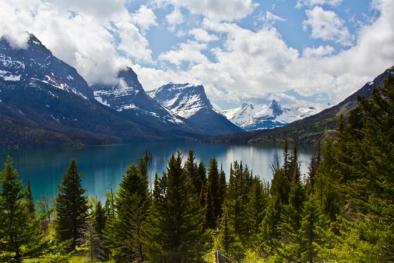Montana's melting glaciers: The poster-child for climate change

As recently as 100 years ago, Montana's Glacier National Park had more than 150 glaciers throughout its more than one million acres.
In 2005 only 27 remained. Today the total is down to a just 25 and those that are left are mere remnants of their former frozen selves.
With warmer temperatures and changes to the water cycle, scientists predict Glacier National Park will be glacier-free by 2030.
Daniel Fagre, a U.S. Geological Survey (USGS) ecologist who works at the national park believes that even those estimates are too conservative and says the park's namesakes will be gone about ten years ahead of their predicted demise.
"The glaciers have been around for the last seven thousand years," he told CNN, "and if we are going to lose them in the next 10 or 20 years that is a pretty radical shift."
The rapid melting of glaciers has led scientists to believe that mountains are more susceptible to global warming than the lowlands beneath them.
"Mountain ecosystems have been changing about twice as fast as the rest of the globe. We have had temperature increases that are two times greater than the average," said Fagre.
Many scientists are now concerned about the cascading effects on the landscape and the consequences for all species -- including humans.
"Many people are directly dependent on the water coming out of mountains and in the arid western United States that figure is much larger, it is about 85 percent," said Fagre.
"So even if you live a long ways a way you are tied to the water in mountains and so we have a lot of concerns of future climate change scenarios."
Fagre says mountains are the "water towers of the world" with 70 percent of the world's fresh water frozen in glaciers.
Related Content




